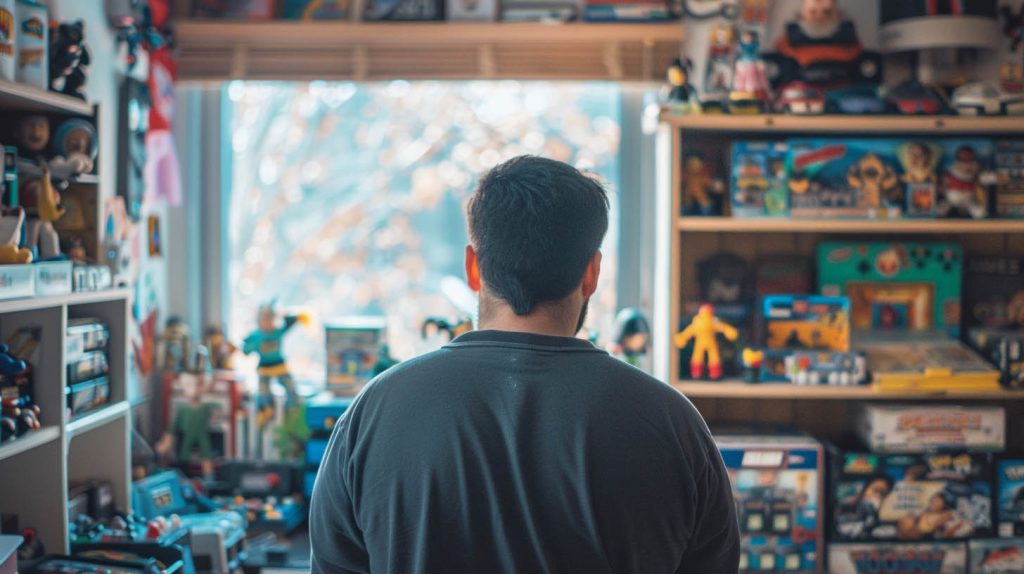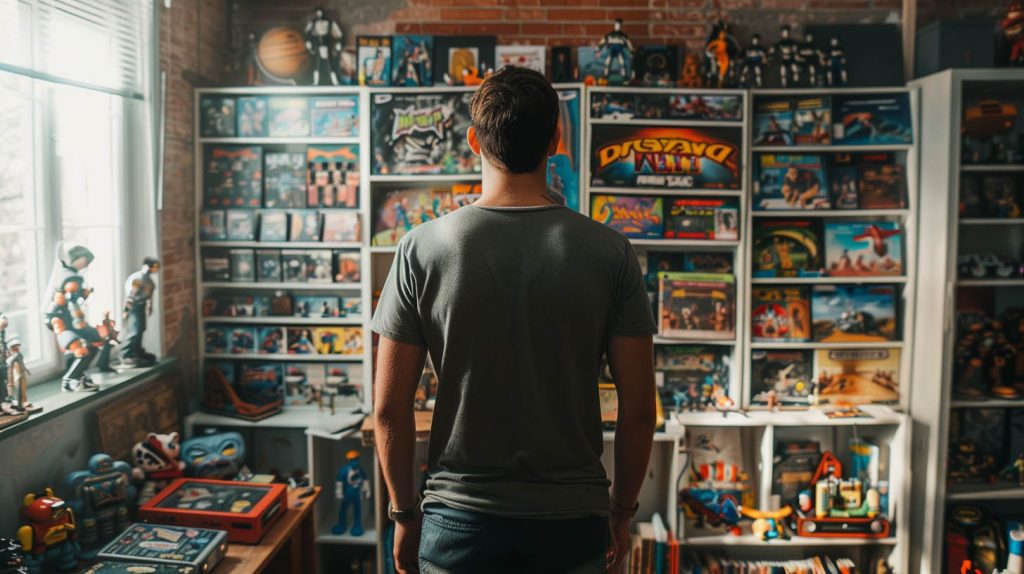When you buy through our links, we may earn a commission. Learn more.
History of Retro Toy Collections
The history of retro toy collections highlights the growth of toy collecting as a popular hobby. We will explore the key factors that led to this surge in interest, including the rise of iconic brands like Hasbro and Mattel, as well as the impact of media on toy popularity.
The Rise of Toy Collecting in the 70s and 80s
During the 1970s and 1980s, toy collecting transformed into a popular pastime for many. The emergence of vintage toys during this time sparked interest among adults who once cherished these items as children.
Collectors began to search for toys that had become harder to find, creating a vibrant market. Notable toy lines included:
- Star Wars action figures
- G.I. Joe
- Barbie dolls
As collectors hunted for rare pieces, they established a sense of community, exchanging knowledge and sharing their passion for vintage items. Toy conventions and expos began to appear, further enhancing the culture of collecting.
Iconic Toy Brands: Hasbro and Mattel
Hasbro and Mattel emerged as two dominant players in the toy industry during this era. Both companies produced iconic toys that captured the hearts of many children and collectors alike.
Hasbro introduced lines like Transformers and G.I. Joe, which became staples in toy boxes across the country. Meanwhile, Mattel’s Barbie and Hot Wheels not only enjoyed immense popularity but also sparked a strong nostalgic connection.
These brands crafted innovative marketing strategies and engaged with fans through various media channels, ensuring their toys remained in the collective memory of consumers. As a result, their products became highly sought after in vintage markets.
The Influence of Media on Toy Popularity
Media played a crucial role in shaping toy trends. Television shows, movies, and advertising significantly influenced what toys became popular.
For instance, the release of the Star Wars films in the late 70s created unprecedented demand for related toys. Marketing campaigns effectively captured the excitement of young audiences, driving parents to purchase action figures and playsets.
Additionally, animated series like Transformers and G.I. Joe further fueled interest in associated toys. As these media properties became intertwined with toys, we saw a growing culture of nostalgia among adult collectors eager to recapture their childhood.
By understanding this history, we can appreciate the rich context behind our retro toy collections today.
Valuation and Acquisition
Understanding how to evaluate and acquire retro toy collections is essential for both seasoned collectors and newcomers. We will explore key methods for assessing the value of vintage toys, where to find them, and how to preserve their condition.
Assessing the Value of Vintage Toys
To determine the worth of vintage toys, we consider several criteria. Rarity plays a crucial role; items with limited availability tend to command higher prices. For instance, toys from the Star Wars franchise are often in high demand, especially original figures from the late 1970s and early 1980s.
Condition is equally important. Toys that are still in their original packaging or are in near-mint condition typically sell for more. We can categorize toys as follows:
- Mint Condition: No flaws; often still sealed.
- Excellent Condition: Minor wear or slight damage.
- Good Condition: Noticeable wear; functional but not collectible.
Consulting a reputable price guide can also aid in this process. These guides provide valuable insight into current market trends.
Sources and Venues for Collectors
We have numerous options when it comes to finding vintage toys. Online marketplaces, auction sites, and collector events are great places to explore. Here’s where we can look:
- eBay: Features a wide range of listings from different eras, including the 90s.
- Local Toy Stores: Some specialize in retro and collectible toys.
- Toy Shows and Conventions: These events offer opportunities to meet other collectors and discover rare finds.
Building a network with other collectors enhances our chances of discovering unique items. Online forums and social media groups often share leads and tips for finding valuable toys.
Preservation and Maintenance of Toy Collections
Proper care is key to maintaining the value of our toy collections. We should consider the following tips:
- Storage: Keep toys in a cool, dry place away from direct sunlight.
- Cleaning: Use soft cloths to dust toys gently; avoid harsh chemicals.
- Display: Use shelves or display cases that protect from dust and damage.
For vintage toys, such as those from Fisher-Price or Lego, preservation is vital. Taking these steps helps retain their condition and, consequently, their value over time.
I’m Cartez Augustus, a content creator based in Houston, Texas. I’ve been exploring a variety of niches in content marketing in order to increase website traffic. I enjoy experimenting with artificial intelligence, search engine optimization, and paid search. The process of creating nerd-related content has been extremely rewarding since it has enabled me to network with people who are knowledgeable about these subjects.

